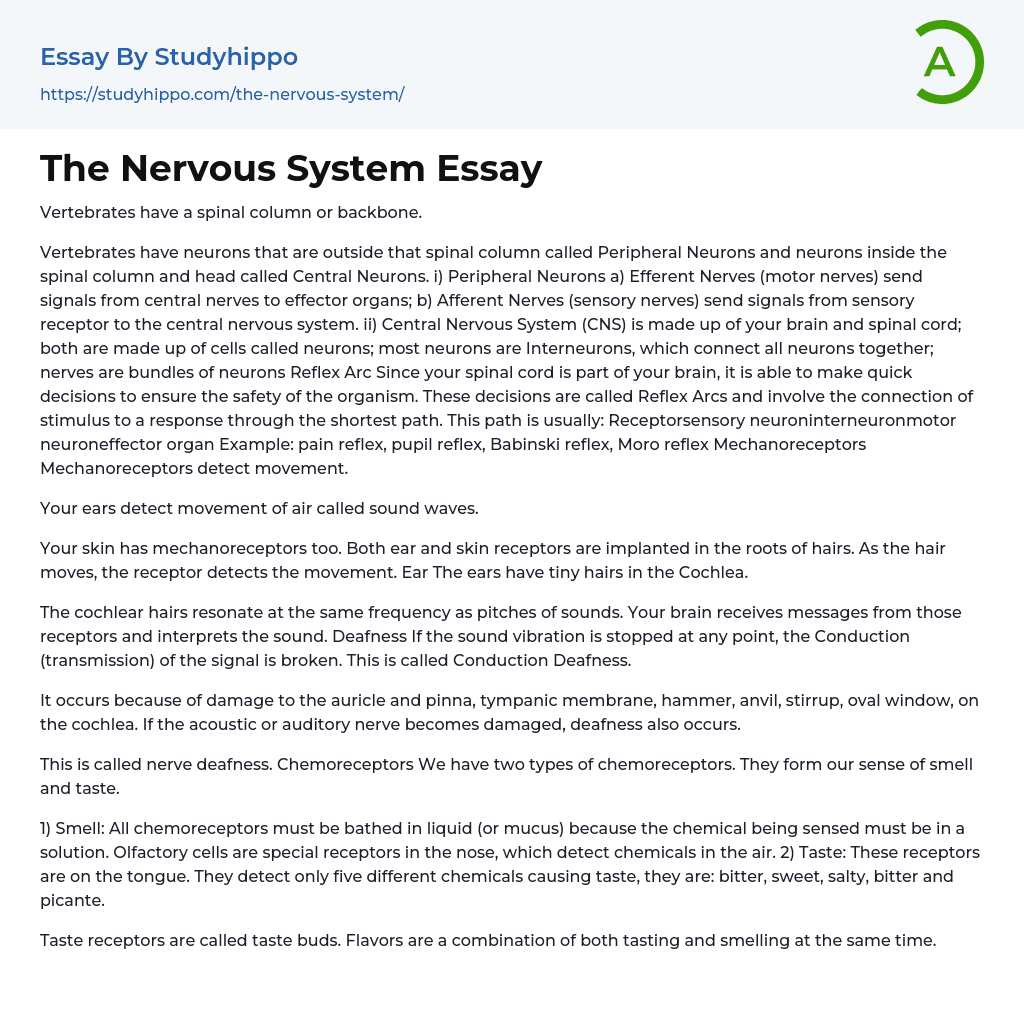Vertebrates have a spinal column or backbone. They possess two types of neurons: Peripheral Neurons, found outside the spinal column, and Central Neurons, located within the spinal column and head.
i) Peripheral Neurons include:
a) Efferent Nerves - these transmit signals from central nerves to effector organs.
b) Afferent Nerves - these transmit signals from sensory receptors to the central nervous system.
ii) The Central Nervous System (CNS) consists of the brain and spinal cord, both composed of neurons. The majority of these neurons are Interneurons that connect all other neurons together.
Nerves are bundles of neurons. Reflex arcs occur within the spinal cord and involve a rapid decision-making process for an organism's safety. These reflexes connect a stimulus to a response through the shortest path, typically involving receptor – sensory neuron – interneuron – motor neuron – ef
...fector organ. Various examples of reflex arcs include pain reflex, pupil reflex, Babinski reflex, and Moro reflex.
Mechanoreceptors play a role in detecting movement. Both ears detect movements of air as sound waves while mechanoreceptors on the skin also detect movement. Hair roots contain receptors for both ears and skin that sense movement when hair moves. In the Cochlea of the ear, tiny hairs resonate at frequencies matching pitches of sounds.The brain receives messages from receptors to interpret sound.Conduction deafness results from damage to various ear parts, such as the auricle, tympanic membrane, hammer, anvil, stirrup, and oval window on the cochlea. In contrast, nerve deafness occurs when there is damage to the acoustic or auditory nerve. Our sense of smell depends on olfactory cells in the nose serving as chemoreceptors that detect chemicals in the air. Taste buds act as chemoreceptors for
taste and are found on the tongue. They can identify five different taste sensations: bitter, sweet, salty, sour, and umami. It's important to note that flavors arise from a combination of both taste and smell.
- Common sense essays
- Central Nervous System essays
- Action Potential essays
- Blood essays
- Body essays
- Brain essays
- Childbirth essays
- Eye essays
- Glucose essays
- Heart essays
- Human Physiology essays
- Immune System essays
- Kidney essays
- Muscle essays
- Nervous System essays
- Neuron essays
- Poison essays
- Puberty essays
- Sense essays
- Skeleton essays
- Skin essays




